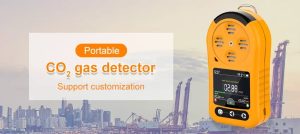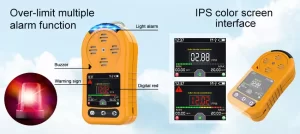Air pollution is a major global concern that poses significant risks to human health and the environment. In recent years, there has been a growing interest in understanding the sources, levels, and impacts of air pollution. To address this issue, state-of-the-art gas sensors have emerged as powerful tools that can provide valuable insights into air quality and pollution patterns. In this article, we will explore the role of these advanced sensors in unlocking insights into air pollution.

Evolution of Gas Sensors:
Gas sensors have come a long way in terms of technological advancements. Earlier, traditional gas sensors could only measure a limited number of pollutants. However, with the development of advanced materials and detection techniques, modern gas sensors are capable of detecting a wide range of gases, including volatile organic compounds (VOCs), nitrogen dioxide (NO2), carbon monoxide (CO), and particulate matter (PM).
Sensing Technologies:
State-of-the-art gas sensors employ various sensing technologies to detect pollutants accurately. One such technology is electrochemical sensors, which convert the chemical reactions of pollutants into electrical signals. These sensors offer high sensitivity and selectivity for specific gases and can be integrated into portable devices for on-the-go monitoring.
Another promising technology is optical sensors, which use light absorption or scattering principles to measure pollutant concentrations. These sensors are highly specialized and offer real-time and continuous measurements with high precision. They are particularly useful in monitoring particulate matter and aerosols.
Furthermore, advancements in nanotechnology have led to the development of nanostructured gas sensors. These sensors utilize nanomaterials, such as metal oxides and carbon nanotubes, to enhance sensitivity and selectivity. They have the potential to detect low-level pollutant concentrations and offer rapid response times.
Applications of Gas Sensors:
Gas sensors find applications in various sectors to monitor and evaluate air quality. In urban areas, they are deployed in monitoring stations to assess pollution levels and identify hotspots. These sensors provide real-time data that helps local authorities take immediate actions to mitigate pollution and protect public health.
Gas sensors are also utilized in indoor environments, such as homes, schools, and offices, to monitor indoor air quality. This is particularly important as studies have shown that indoor air pollution can have a significant impact on human health. Gas sensors enable the detection of harmful pollutants, such as VOCs and CO, allowing individuals to take preventive measures and improve their indoor environments.
Moreover, these sensors play a vital role in industrial settings by monitoring emissions from factories and industrial processes. By continuously monitoring gas emissions, companies can ensure they comply with environmental regulations, reduce pollution, and optimize their production processes.
Benefits and Challenges:
The use of state-of-the-art gas sensors in air pollution monitoring offers several benefits. Firstly, they enable real-time and continuous monitoring, providing accurate and up-to-date information on pollution levels. This information can help policymakers make informed decisions and implement effective strategies to reduce air pollution.
Secondly, gas sensors offer high selectivity and sensitivity, allowing for the detection of low-level pollutant concentrations. This is crucial as even small increases in pollutant levels can have adverse health effects. Gas sensors allow for timely identification of pollution sources and help in the development of targeted pollution control measures.
Despite their numerous advantages, gas sensors also face certain challenges. Calibration and maintenance of these sensors can be complex and time-consuming. Furthermore, variations in environmental conditions, such as temperature and humidity, can affect sensor performance and accuracy. Thus, continuous research is needed to overcome these challenges and improve the reliability of gas sensor technologies.

Future Outlook:
The future of gas sensors in air pollution monitoring looks promising. It is expected that these sensors will become even more portable, affordable, and user-friendly, allowing individuals to monitor the air quality in their immediate surroundings. Integration of gas sensors with Internet of Things (IoT) platforms will enable real-time data collection and analysis, facilitating the development of smart cities and sustainable urban planning.
Furthermore, advancements in data analytics and artificial intelligence algorithms will enhance the interpretation of sensor data and enable predictive modeling of air pollution dynamics. This will help in the early identification of pollution hotspots and the implementation of proactive measures to reduce pollution levels.
 : +86 155 8830 2704
: +86 155 8830 2704 : jxdziot@gmail.com
: jxdziot@gmail.com
